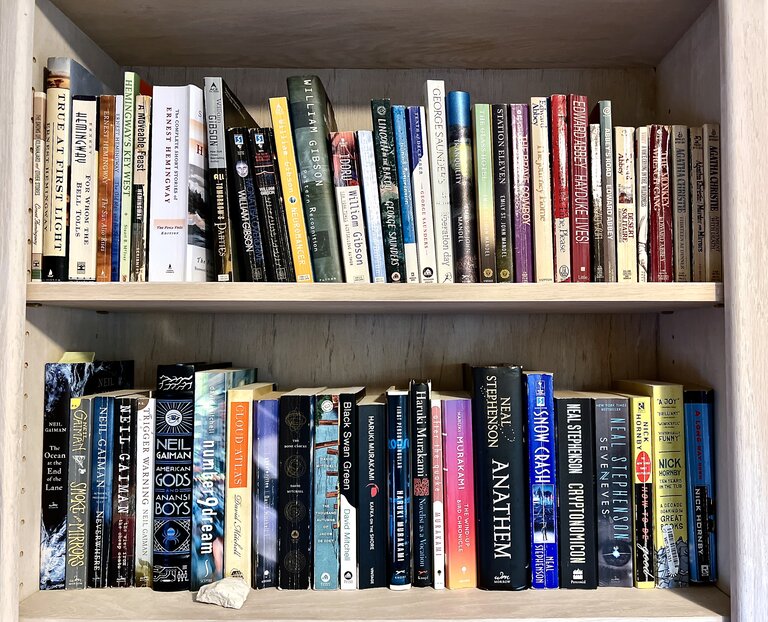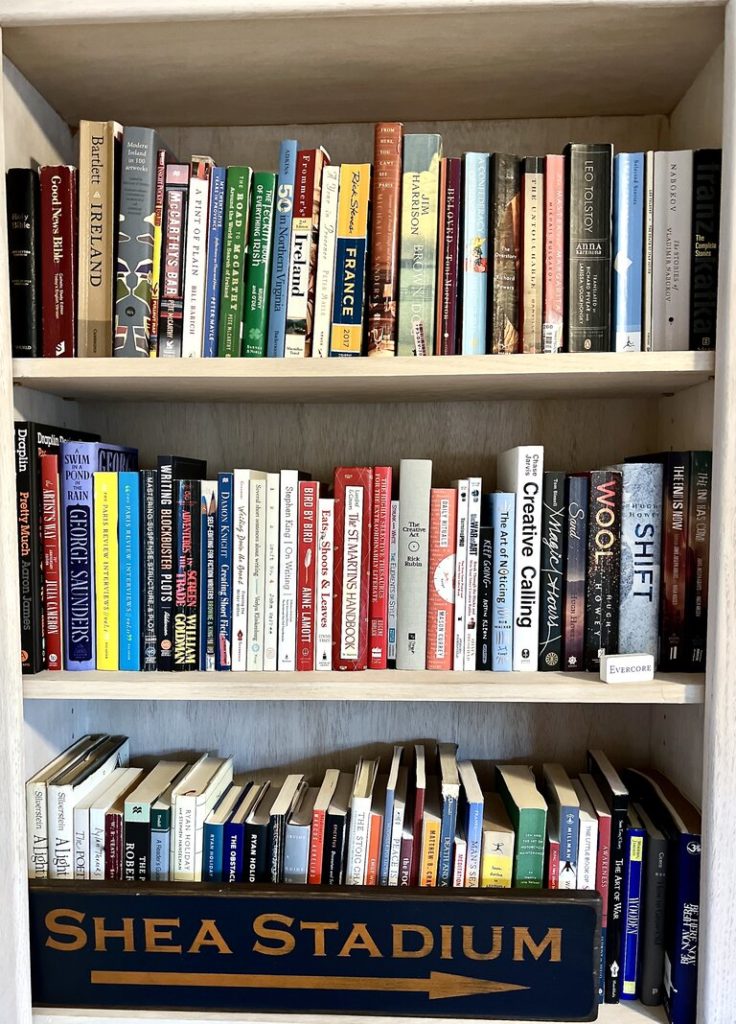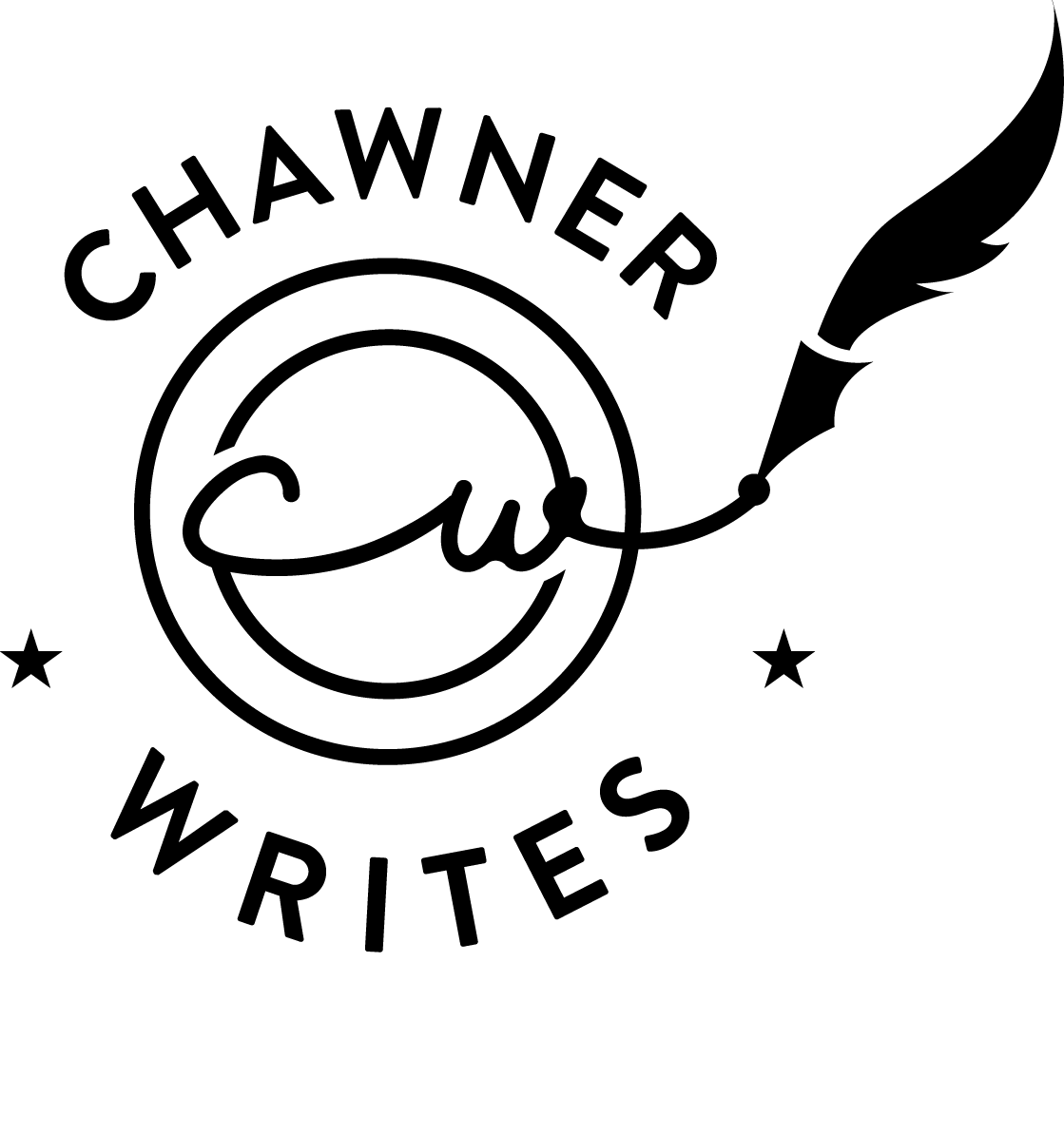
I’ve written about my bookshelves in an earlier post. Since then, I’ve collected more books but not shelving. I have a space issue.
I banished my leather bound morning pages journals to the closet and consolidated my growing collection of magazines. Now to choose books to get rid of… first were the terrible books I’d acquired “for free”. Then the seemingly important but ultimately unreadable books like The Origin of Species . Finally, the garbage books that I’d purchased but discovered weren’t worth reading, or hopelessly dated books (environmental best practices from the late 1980s).
The excess books filled a large plastic bin destined for donation to the local library.
Now to the fun part; how to organize? My guiding principle is make books easy to find, rather than systems based on size or color. Authors with the highest number of books dominate the central stack; Hemingway, Gaiman, Mitchell, etc. and are bunched together. Below them are “classics”, anything from A River Runs Through It to Cheever’s short stories.

The second stack is organized by topic like writing, poetry, philosophy, history. Heavy programming books, along with old dictionaries and picture books on the bottom shelf. And the newer butcher block shelves get “everything else”… fiction but not classics or literature or bunched by author. I used the top for the larger books and items that don’t fit on shelves.
It’s neater, for now. And I can find the books I need when I need them. This exercise yielded some interesting findings… like how many books I have by authors I don’t read anymore (Ed Abbey or T. C. Boyle). And, sadly, I’ve confirmed certain books I used to own (Dubliners, The Road) are gone.
